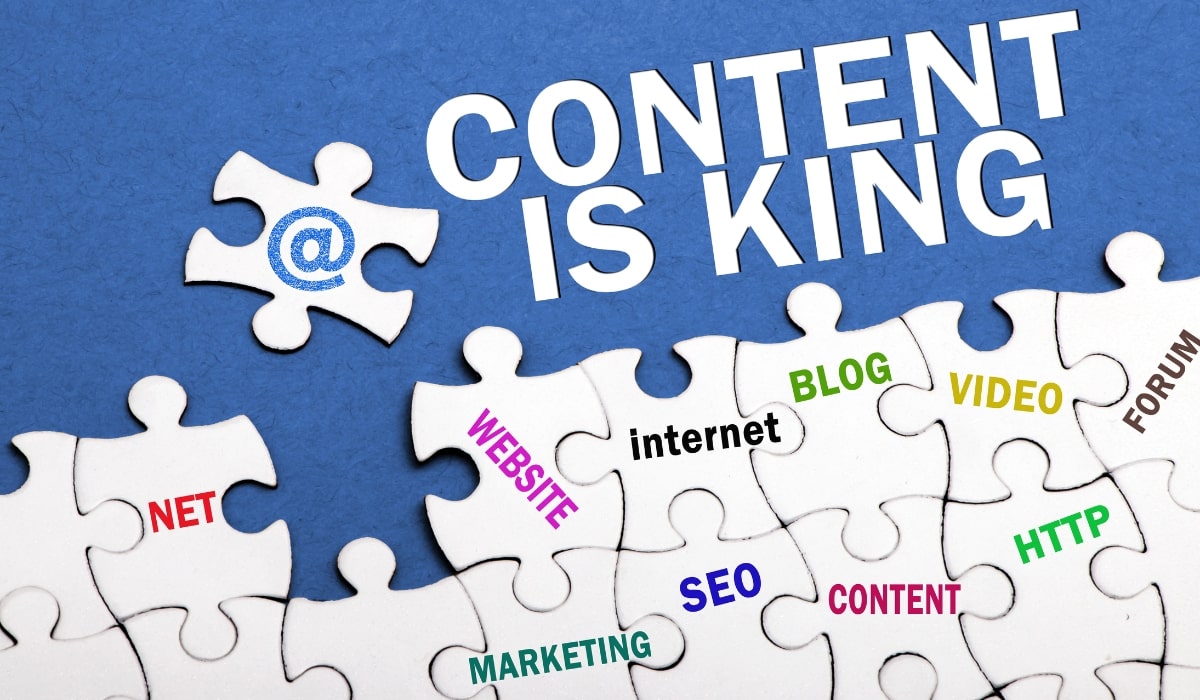Nonprofits often struggle to gain visibility and attract support in a crowded online landscape. Traditional marketing methods may not always yield the desired results, making it necessary to adopt a different approach. Content marketing offers a solution by providing valuable and engaging content that resonates with the target audience.
One of the primary benefits of content marketing for nonprofits is the ability to reach a wider audience. By creating and distributing relevant content, nonprofits can expand their reach beyond their existing supporters and engage with new individuals who may be interested in their cause. This increased visibility can lead to greater awareness and support for the organization’s mission.
Moreover, content marketing helps nonprofits build trust and credibility. By consistently delivering valuable content that addresses the needs and interests of their audience, nonprofits can establish themselves as thought leaders in their respective fields. This expertise and credibility can foster trust among supporters, making them more likely to donate and become long-term advocates for the organization.
Another significant advantage of content marketing for nonprofits is its ability to encourage donations and support. By creating compelling storytelling through various forms of content such as blog posts, videos, and infographics, nonprofits can evoke emotions and inspire action. This can lead to increased donations, volunteer participation, and overall support for the organization’s cause.
To implement an effective content marketing strategy, nonprofits need to consider several key components. Understanding the target audience is crucial, as it allows nonprofits to create content that resonates with their specific interests and motivations. Additionally, creating valuable and relevant content is essential to keep the audience engaged and interested in the organization’s work.
Utilizing social media and other platforms is also crucial for nonprofits to amplify their content and reach a wider audience. By strategically sharing content on platforms like Facebook, Instagram, and LinkedIn, nonprofits can increase their visibility and attract more followers and supporters.
Measuring the success of a content marketing strategy is equally important. By analyzing key metrics such as website traffic, engagement rates, and conversion rates, nonprofits can assess the effectiveness of their content and make necessary adjustments to improve their results.
In this blog post, we will also provide practical tips on how to implement a content marketing strategy for your nonprofit organization. We will discuss setting goals and objectives, creating a content calendar, optimizing content for search engine optimization (SEO), promoting content through various channels, and evaluating and adjusting your strategy based on data and feedback.
Lastly, we will showcase successful nonprofit content marketing examples through popular case studies. These real-life examples will provide inspiration and valuable insights into how other nonprofits have effectively utilized content marketing to achieve their goals.
Stay tuned for our upcoming posts as we delve deeper into the world of content marketing for nonprofits and equip you with the knowledge and tools to make a meaningful impact through your organization’s online presence.
Introduction to Content Marketing for Nonprofits
Content marketing is a strategic approach that involves creating and distributing valuable, relevant, and consistent content to attract and engage a specific target audience. While commonly associated with businesses, content marketing is equally applicable to nonprofits.
In this section, we will provide an introduction to content marketing for nonprofits, highlighting its purpose, benefits, and how it differs from traditional marketing approaches. By understanding the fundamentals of content marketing, nonprofits can harness its power and leverage it to achieve their goals.
What is Content Marketing?
Content marketing is a marketing technique that focuses on creating and sharing informative, entertaining, and valuable content to attract and engage a target audience. The content can take various forms, including blog posts, articles, videos, podcasts, infographics, social media posts, and more.
Unlike traditional marketing, which often revolves around promotional messages and direct sales pitches, content marketing aims to provide value to the audience. It seeks to educate, entertain, inspire, or solve a problem for the target audience, positioning the organization as a trusted resource and building a long-term relationship.
How Does Content Marketing Benefit Nonprofits?
Content marketing offers numerous benefits for nonprofits, helping them achieve their mission and connect with their supporters in meaningful ways. Some of the key benefits include:
- Increased Visibility: By creating and sharing valuable content, nonprofits can reach a wider audience beyond their immediate supporters. This increased visibility can attract new individuals who are interested in the cause and expand the organization’s reach.
- Building Trust and Credibility: By consistently delivering valuable content that addresses the needs and interests of their audience, nonprofits can establish themselves as trusted authorities in their field. This helps build credibility and fosters trust among supporters, making them more likely to engage with the organization and support its cause.
- Engaging Supporters: Content marketing allows nonprofits to engage their supporters on a deeper level. By providing valuable and relevant content, nonprofits can create meaningful connections with their audience, keeping them informed and engaged with the organization’s work.
- Encouraging Donations and Support: Compelling storytelling through content can evoke emotions and inspire action. By showcasing the impact of their work and sharing success stories, nonprofits can encourage donations, volunteer participation, and overall support for their cause.
How is Content Marketing Different for Nonprofits?
While content marketing principles remain the same for nonprofits and businesses, there are some nuances to consider. Nonprofits often have different goals and target audiences, requiring tailored content strategies. Additionally, nonprofits must emphasize their mission and impact in their content, as these aspects are critical to attracting supporters.
Nonprofits may also face unique challenges, such as limited resources and the need to comply with legal and ethical considerations. However, with careful planning and strategic execution, nonprofits can overcome these challenges and effectively leverage content marketing to achieve their objectives.
In the next section, we will explore the key components of effective nonprofit content marketing, providing insights into understanding the target audience, creating valuable content, utilizing social media platforms, and measuring the success of your content marketing efforts.
Why Content Marketing is Important for Nonprofits
Content marketing plays a crucial role in the success of nonprofit organizations. In this section, we will delve into the reasons why content marketing is important for nonprofits, focusing on three key aspects: reaching a wider audience, building trust and credibility, and encouraging donations and support.
Reaching a Wider Audience
Nonprofits often struggle to gain visibility and attract new supporters in a crowded digital landscape. Traditional marketing methods may not effectively target the desired audience or engage them in a meaningful way. This is where content marketing becomes invaluable.
By creating and distributing valuable content, nonprofits can reach a wider audience beyond their immediate supporters. Through search engine optimization (SEO) techniques, social media sharing, and effective content promotion strategies, nonprofits can attract individuals who are actively seeking information or solutions related to their cause by using content and inbound marketing.
Content marketing enables nonprofits to expand their reach and connect with individuals who may not be aware of their mission or the impact they are making. By consistently delivering valuable content, nonprofits can capture the attention of new supporters, sparking their interest and encouraging them to engage with the organization.
Building Trust and Credibility
Trust and credibility are essential for nonprofits to establish strong relationships with their supporters and stakeholders. Content marketing provides an avenue to demonstrate expertise, share valuable insights, and showcase the impact of the organization’s work.
By consistently delivering high-quality and relevant content, nonprofits can position themselves as trusted authorities in their field. Sharing educational resources, success stories, and thought-provoking content not only helps educate the audience but also builds credibility and fosters trust.
Moreover, content marketing allows nonprofits to humanize their organization. By sharing personal stories, testimonials, and behind-the-scenes content, nonprofits can create a sense of authenticity and transparency, further enhancing trust among their audience.
Encouraging Donations and Support
At the heart of every nonprofit’s mission is the need for support, whether in the form of donations, volunteerism, or advocacy. Content marketing can be a powerful tool in inspiring action and encouraging individuals to contribute to the cause.
Through compelling storytelling, nonprofits can create emotional connections with their audience. By sharing impactful stories of individuals who have benefited from the organization’s work, nonprofits can evoke empathy and drive individuals to take action.
Additionally, content marketing allows nonprofits to educate their audience about the importance of their cause and the impact their support can make. By providing valuable information and insights, nonprofits can empower individuals to make informed decisions and become active supporters.
In the next section, we will explore the key components of effective nonprofit content marketing, providing insights into understanding the target audience, creating valuable and relevant content, utilizing social media platforms, and measuring the success of your content marketing efforts.

Key Components of Effective Nonprofit Content Marketing
To implement a successful content marketing strategy, nonprofits must focus on several key components. In this section, we will explore these components in detail, providing insights and strategies to help nonprofits achieve their content marketing goals.
Understanding Your Audience
Understanding your target audience is the foundation of any effective content marketing strategy. By gaining insights into their demographics, interests, motivations, and challenges, nonprofits can create content that resonates with their audience and addresses their specific needs.
To understand your audience, consider conducting market research, surveys, and analyzing data from your existing supporters. This information will help you create buyer personas or supporter profiles that represent your target audience segments. By understanding their preferences, pain points, and aspirations, you can tailor your content to meet their expectations and engage them effectively.
Creating Valuable and Relevant Content
Creating valuable and relevant content is key to capturing and maintaining the attention of your audience. Your content should provide information, insights, or entertainment that aligns with your audience’s interests and needs.
Consider the different content formats that resonate with your audience, such as blog posts, videos, podcasts, infographics, or social media posts. Experiment with various types of content to determine what works best for your nonprofit and your audience.
Additionally, focus on storytelling. Share compelling stories that highlight the impact of your organization’s work. Use narratives that evoke emotions and connect with your audience on a deeper level. This storytelling approach will help you build a strong emotional connection with your supporters.
Utilizing Social Media and Other Platforms
Social media is a powerful platform for nonprofits to amplify their content and engage with their audience. Identify the social media channels that your target audience frequents and create a presence on those platforms. Develop a social media strategy that involves sharing your content, engaging in conversations, and fostering a sense of community around your cause.
In addition to social media, consider other platforms that can help you reach your audience. This could include guest blogging on relevant websites, participating in online forums or communities, or even hosting webinars or virtual events.
Measuring Success
Measuring the success of your content marketing efforts is crucial to understanding what is working and what needs improvement. By analyzing relevant metrics, you can gain insights into the effectiveness of your content and make data-driven decisions.
Some key metrics to consider include website traffic, engagement rates (such as likes, comments, and shares), conversion rates (such as sign-ups or donations), and audience feedback. Use tools like Google Analytics, social media analytics, and email marketing platforms to track and analyze these metrics.
Regularly review your data and make adjustments to your content strategy based on the insights you gather. This iterative approach will help you continuously improve and optimize your content marketing efforts.
In the next section, we will discuss the step-by-step process of implementing a content marketing strategy for your nonprofit organization, including setting goals and objectives, creating a content calendar, optimizing content for SEO, promoting your content, and evaluating and adjusting your strategy.
How to Implement a Content Marketing Strategy for Your Nonprofit
Implementing a content marketing strategy for your nonprofit organization requires careful planning and execution. In this section, we will walk you through a step-by-step process to help you effectively implement your content marketing strategy and achieve your nonprofit’s goals.
Setting Goals and Objectives
Before diving into content creation, it’s essential to establish clear goals and objectives for your content marketing efforts. What do you hope to achieve with your content? Are you looking to increase brand awareness, drive donations, or engage volunteers? Setting specific, measurable, achievable, relevant, and time-bound (SMART) goals will provide a framework for your content strategy and allow you to track your progress.
Creating a Content Calendar
A content calendar is a roadmap that outlines the content you plan to create and distribute over a specific period. It helps you stay organized, ensures consistency, and enables you to align your content with relevant events, holidays, or campaigns.
Start by identifying key topics or themes that are relevant to your nonprofit and align with your audience’s interests. Then, create a schedule for publishing your content, considering the frequency that suits your resources and audience engagement.
Your content calendar should include a mix of different content formats and channels, such as blog posts, videos, social media posts, and email newsletters. This variety will keep your content fresh and engaging for your audience.
Optimizing for SEO
Search engine optimization (SEO) is crucial for improving the visibility of your content in search engine results. By optimizing your content with relevant keywords, meta tags, and other SEO best practices, you can increase organic traffic to your website and attract a larger audience.
Research keywords that are relevant to your nonprofit’s mission and incorporate them naturally into your content. Ensure your website’s technical aspects, such as page load speed and mobile-friendliness, are optimized for a better user experience and search engine rankings.
Promoting Your Content
Creating great content is only part of the equation; you also need to promote it to ensure it reaches your target audience. Develop a robust promotion strategy that involves sharing your content on social media platforms, leveraging email marketing, collaborating with influencers or industry partners, and engaging in online communities or forums.
Consider paid advertising options, such as social media ads or search engine marketing, to boost the visibility of your content and reach a broader audience. Encourage your supporters to share your content with their networks, amplifying your reach organically.
Evaluating and Adjusting Your Strategy
Regularly evaluating the performance of your content marketing efforts is crucial to identifying what works and what needs improvement. Analyze key metrics such as website traffic, engagement rates, conversion rates, and social media analytics to measure the success of your content.
Based on your analysis, make data-driven adjustments to your content strategy. Experiment with different content formats, distribution channels, or messaging to optimize your results. Continuously test and refine your approach to ensure it aligns with your goals and resonates with your audience.
In the next section, we will showcase successful nonprofit content marketing examples through case studies, providing real-life inspiration and insights into how other nonprofits have effectively utilized content marketing to achieve their goals.
Case Studies: Successful Nonprofit Content Marketing Examples
In this final section, we will explore real-life case studies of successful nonprofit content marketing examples. These case studies will provide valuable insights and inspiration for your own content marketing efforts, showcasing how other nonprofits have effectively utilized content to achieve their goals.
Case Study 1: Charity Water
Charity Water, a nonprofit organization dedicated to providing clean and safe drinking water to people in developing countries, has successfully utilized content marketing to raise awareness and drive donations. Their website features compelling storytelling through vivid images, videos, and personal stories of individuals impacted by the lack of clean water.
Through their blog, Charity Water shares updates on their projects, success stories, and educational content related to water issues. They leverage social media platforms to engage their audience and generate support. Their transparency and focus on impact have helped them build trust and credibility among their supporters, leading to substantial donations and long-term partnerships.
Case Study 2: World Wildlife Fund (WWF)
The World Wildlife Fund (WWF), a global conservation organization, has implemented a comprehensive content marketing strategy to raise awareness about environmental issues and engage supporters. They leverage various content formats, including articles, videos, infographics, and interactive campaigns, to educate their audience and inspire action.
WWF’s website features engaging and informative content, such as their Living Planet Report, which highlights the state of the planet’s biodiversity. They also utilize social media platforms to share updates on conservation efforts, engage in discussions, and encourage sustainable practices.
By creating valuable content and leveraging social media, WWF has successfully mobilized millions of supporters worldwide, driving donations, influencing policy changes, and making a significant impact in the field of conservation.
Case Study 3: DonorsChoose
DonorsChoose, an online platform connecting teachers in need with donors, has utilized content marketing to engage their audience and drive donations for education projects. Their website features compelling stories from teachers and students, showcasing the impact of donations on classroom resources and student learning.
DonorsChoose also encourages teachers to share their project stories and promote them through social media. This user-generated content creates a sense of authenticity and community, motivating donors to contribute to specific projects they resonate with.
Through their content marketing efforts, DonorsChoose has raised millions of dollars for education projects, empowering teachers and improving educational opportunities for students across the United States.
These case studies demonstrate the power of content marketing for nonprofits. By creating valuable and engaging content, leveraging storytelling techniques, and utilizing various platforms, nonprofits can raise awareness, drive donations, and make a meaningful impact on their mission.
Ready to Amplify Your Nonprofit’s Voice with Unstoppable Content Marketing?
Transform your nonprofit’s narrative into a magnetic force that captivates hearts and minds! At Zen 9 Marketing, we believe in the unstoppable power of content marketing to widen your reach, forge unbreakable trust, and ignite a surge of support and donations. It’s about diving deep into the heart of your audience, delivering content so valuable it turns followers into champions for your cause.
Take a page from the success stories of giants like Charity Water, WWF, and DonorsChoose. These trailblazers have harnessed the magic of content marketing to not just meet but exceed their ambitious goals, making waves of change across the globe. Your nonprofit can too! Draw inspiration from these pioneers and wield content marketing as your sword to carve out a brighter future, one impactful story at a time.
But remember, this journey is a marathon, not a sprint. Keep your eyes on the analytics, tweak your tactics like a maestro, and dare to venture into uncharted creative territories. With Zen 9 Marketing as your guide and a fiery content marketing strategy in hand, there’s no limit to the heights your nonprofit can soar. Ready to make history? Let’s create a legacy of impact together!






